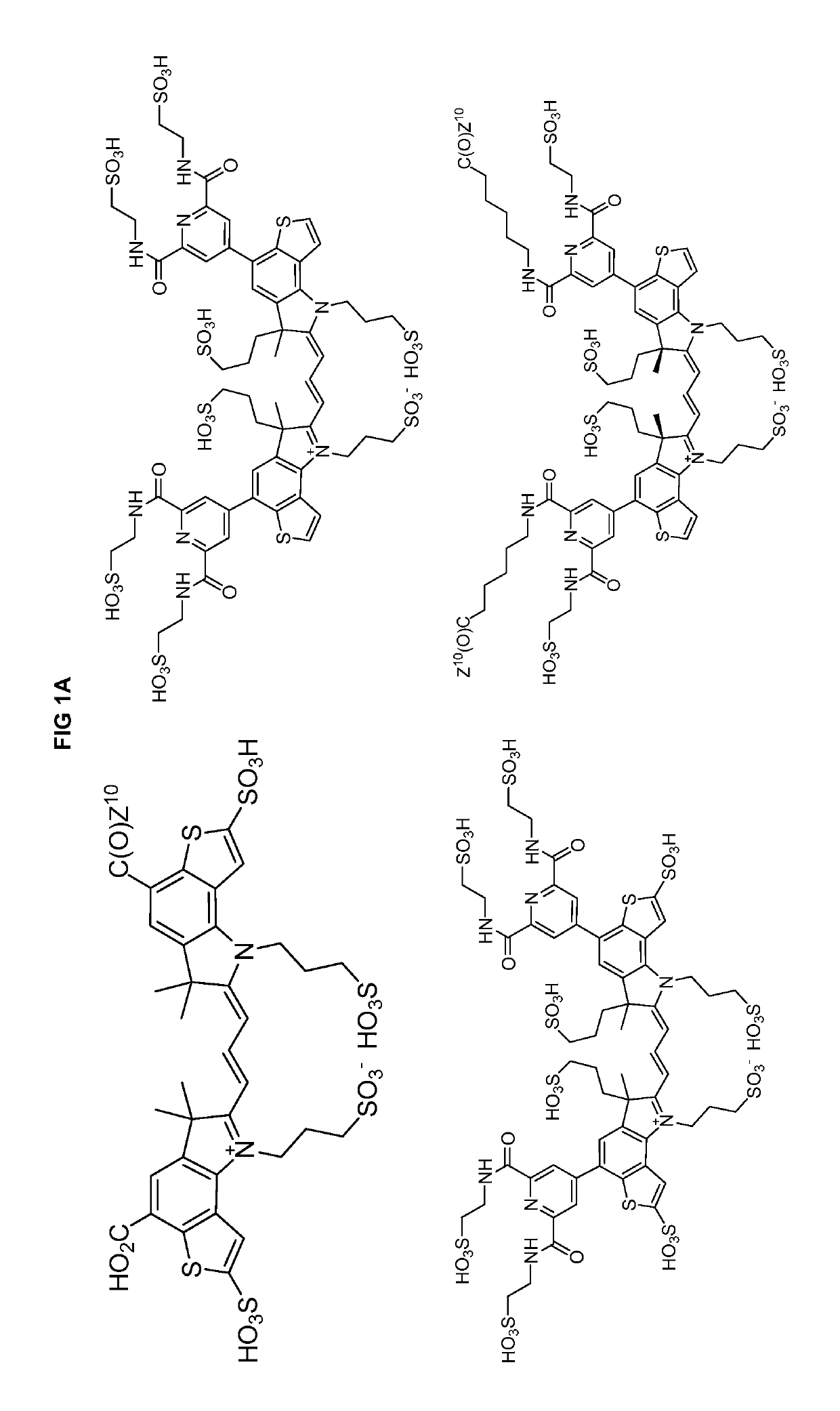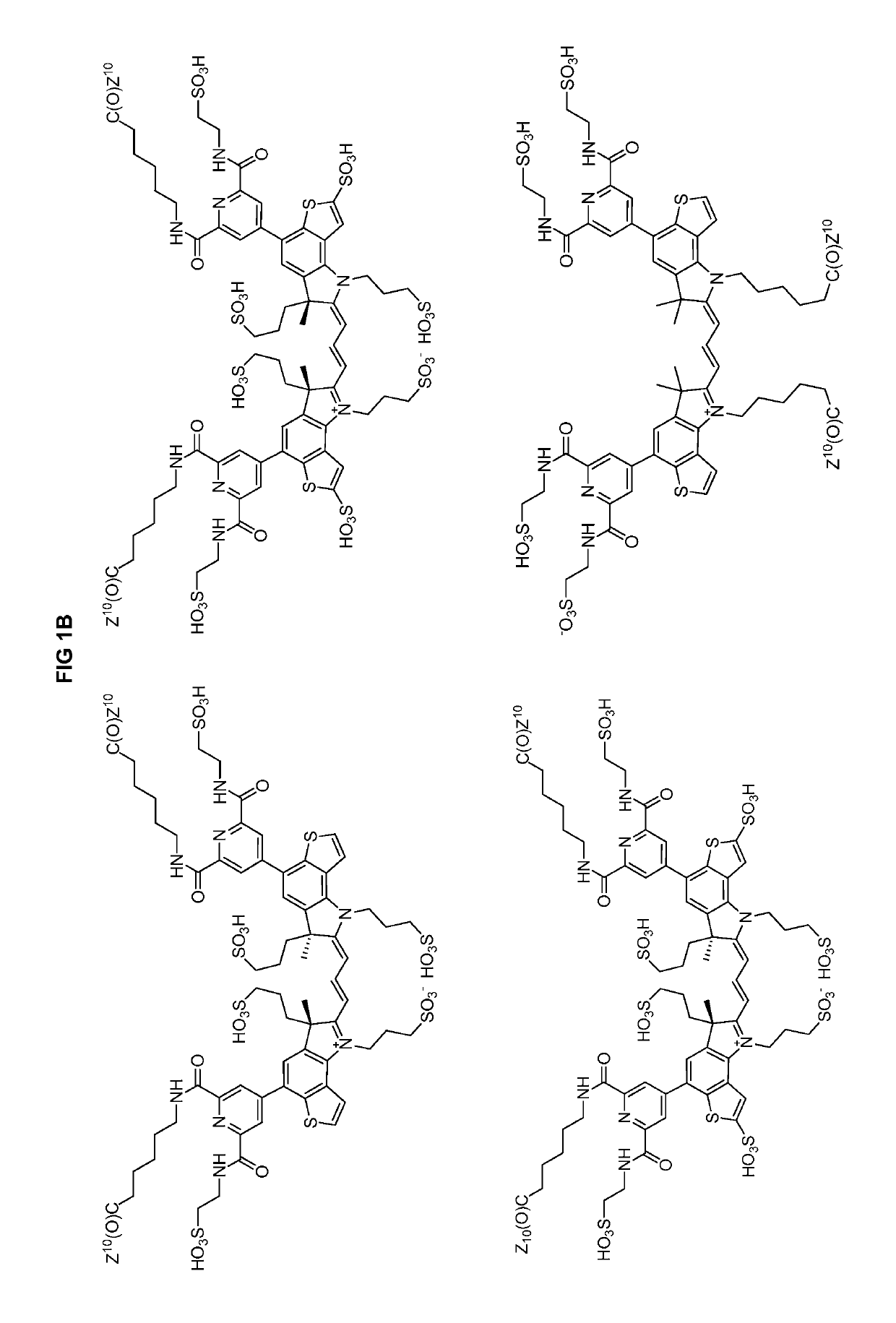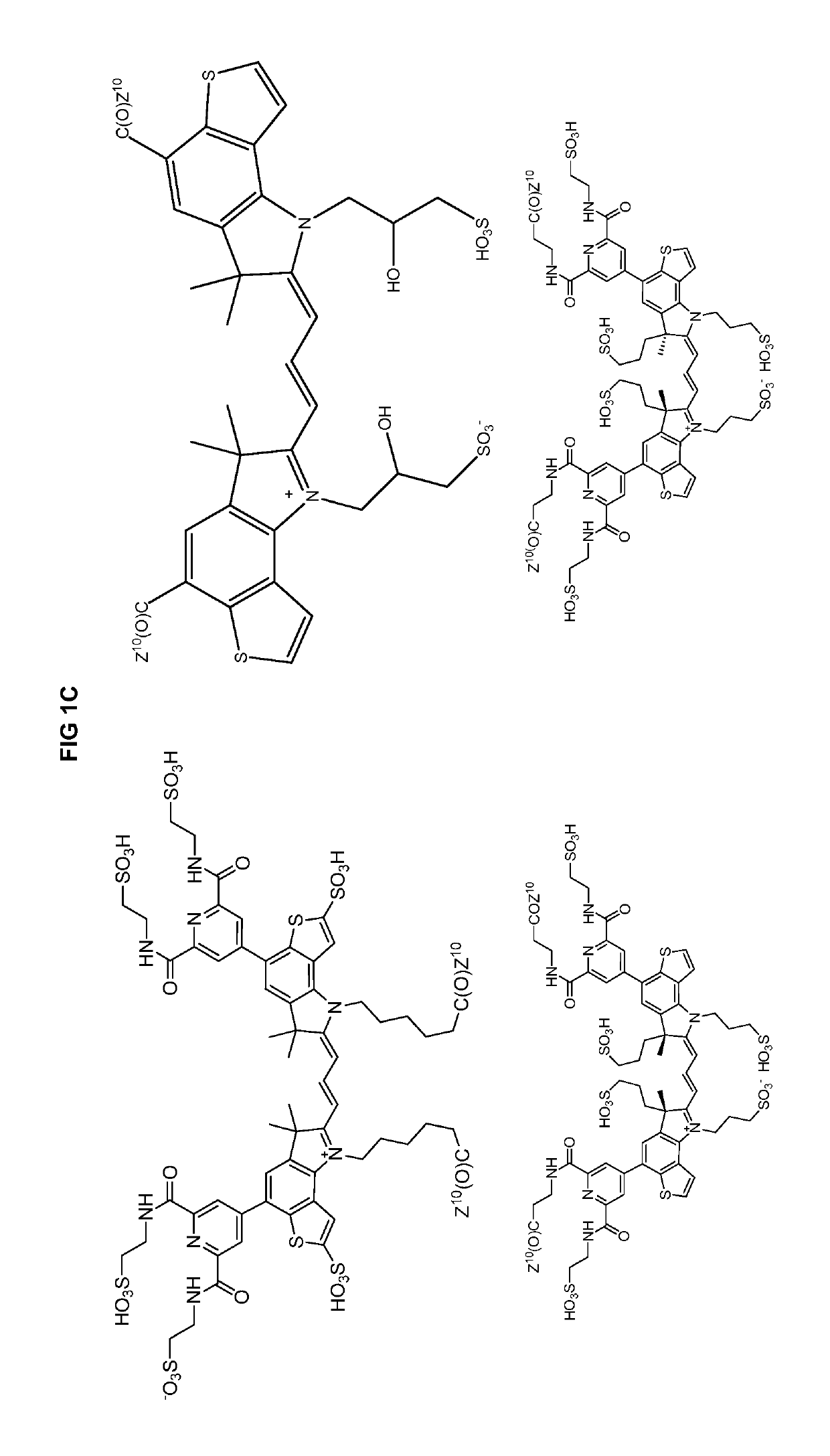Heteroarylcyanine dyes
a technology of heteroarylcyanine and dye, which is applied in the direction of fluorescence/phosphorescence, methine/polymethine dye, instruments, etc., can solve the problems of insufficient hydrophilicity, insufficient brightness, and inability to emit steady, so as to achieve the effect of enhancing assay performance and reverse assay design
- Summary
- Abstract
- Description
- Claims
- Application Information
AI Technical Summary
Benefits of technology
Problems solved by technology
Method used
Image
Examples
example 1
Preparation of A and B
[0284]
[0285]To 0.255 g of 3,5-dihydrazinobenzoic acid hydrochloride in 2 mL of acetic acid, 0.54 mL of 3 methyl-2-butanone was added and the resulting mixture was heated at 130° C. for 2.5 hours. The volatile components were evaporated and the crude was purified by HPLC to yield 0.12 g of each derivative.
1.2 Preparation of C
[0286]
[0287]A mixture of 0.12 g of A and 0.56 mL of propane sultone and 0.5 mL of sulfolane was heated at 140° C. for 2.5 hours. The reaction mixture was cooled to room temperature and 5 mL of ethyl acetate was added and the supernatant was decanted. The resulting mixture was then heated in 5 mL of 1M HCl at 65° C. for 6 hours and the volatiles were evaporated. The crude material was used without further purification.
1.3 Preparation of D
[0288]
[0289]A mixture of 0.12 g of B and 0.56 mL of propane sultone and 0.5 mL of sulfolane was heated at 140° C. for 2.5 hours. The reaction mixture was cooled to room temperature and 5 mL of ethyl acetate w...
PUM
| Property | Measurement | Unit |
|---|---|---|
| Rg | aaaaa | aaaaa |
| Rg | aaaaa | aaaaa |
| Rg | aaaaa | aaaaa |
Abstract
Description
Claims
Application Information
 Login to View More
Login to View More - R&D
- Intellectual Property
- Life Sciences
- Materials
- Tech Scout
- Unparalleled Data Quality
- Higher Quality Content
- 60% Fewer Hallucinations
Browse by: Latest US Patents, China's latest patents, Technical Efficacy Thesaurus, Application Domain, Technology Topic, Popular Technical Reports.
© 2025 PatSnap. All rights reserved.Legal|Privacy policy|Modern Slavery Act Transparency Statement|Sitemap|About US| Contact US: help@patsnap.com



